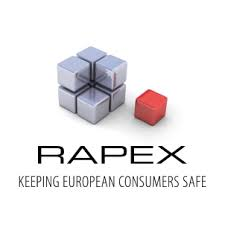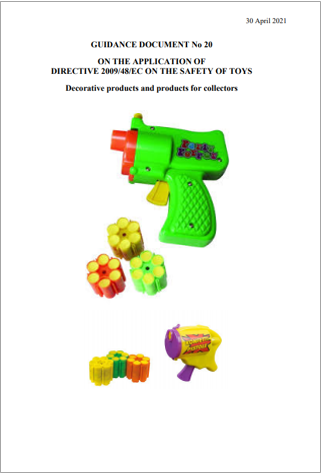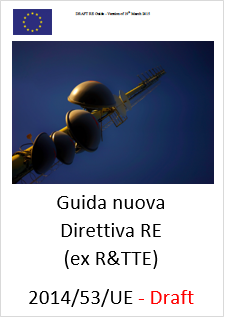Informazione tecnica HSE / 25 ° anno
/ Documenti disponibili:
45.707
/ Documenti scaricati: 34.772.488
/ Documenti scaricati: 34.772.488
EU, 25.05.2020
How to verify that medical devices and personal protective equipment can be lawfully placed on the EU market and thus purchased and used – also in the COVID-19 context
The purpose of this guidance document is to provide basic indications to allow those interested parties who are unfamiliar with the regulated sectors of medical devices and personal protective equipment to identify whether a product is lawfully placed on the EU market and can continue to be made available, thus purchased and used.
Such clarification has proven especially necessary in the context of the COVID-19 pandemic. The related extraordinary circumstances have rapidly increased the need and demand for certain devices and equipment: this has resulted in the involvement of economic operators and other interested parties not previously in the supply and verification chain of these products. In addition, recent experience indicates the need to be attentive to misleading or falsified documents as well as to counterfeit products.
Question 1: What is the applicable regulatory framework for medical devices and personal protective equipment in the EU?
- Council Directive 90/385/EEC of 20 June 1990 on the approximation of the laws of the Member States relating to active implantable medical devices (hereafter referred to as AIMDD)
- Council Directive 93/42/EEC of 14 June 1993 concerning medical devices (hereafter referred to as MDD)
- Directive 98/79/EC of the European Parliament and of the Council of 27 October 1998 on in vitro diagnostic medical devices (hereafter referred to as IVDD)
Medical devices can also already be placed on the EU market if they comply with the following new Regulations which entered into force in May 2017:
The temporal scope and the conditions of applicability of the relevant legal requirements to devices, from the AIMDD, the MDD and the IVDD (hereafter referred to as Directives) to the MDR and the IVDR (hereafter referred to as new Regulations on medical devices), are governed by specific transitional provisions.
On the other hand, personal protective equipment within the EU is currently regulated by Regulation (EU) 2016/425 of the European Parliament and of the Council of March 2016 on personal protective equipment and repealing Council Directive 89/686/EEC (hereafter referred to as PPER).
Question 2: How can a product be lawfully placed on the EU market?
In the EC or EU declaration of conformity, manufacturers must declare that their products comply with the applicable EU legislative act(s) and requirements. There are however no obligations in the EU legal framework to separately draw up declarations of compliance with national legislation, as well as with national, European or international standards.
The Directives and the new Regulations on medical devices, and the PPER, in line with the main pieces of the EU legislation concerning the internal market for goods, lay down essential safety and performance requirements and health and safety requirements, respectively, but do not prescribe any specific mandatory technical solutions for the manufacturing and design of the products. Therefore, the manufacturer can choose which technical solution(s) to use to comply with these legal requirements. Manufacturers can use those offered in harmonised European standards or in other standards or technical specifications, or can come up with their own technical solution(s).
The use of harmonised European standards is a voluntary means to comply with the legal requirements. These standards, developed by the relevant European standardisation organisations, contain specific technical solutions that can be used to comply with the legal requirements. When the reference of a harmonised European standard is cited in the Official Journal of the European Union (OJEU), the use of such standard confers on the product a presumption of conformity with the legal requirements it aims to cover (as listed in the relevant Annex Z). In practice, where a manufacturer chooses to follow a harmonised European standard to which the reference is cited in the OJEU, the product is presumed to be in conformity with the applicable legal requirements covered by such standard. On the contrary, where a manufacturer chooses not to follow a harmonised European standard, it must demonstrate that the alternative technical solution applied is adequate to ensure compliance of the product with the applicable legal requirements.
The manufacturer must also prepare and maintain the relevant technical documentation for the product, in support to the compliance claimed in the EC or EU declaration of conformity. Such technical documentation has to be kept and made available to national competent authorities upon their request.
For medical devices, manufacturers outside the EU must designate a single authorised representative in the EU. Information on the authorised representative must be available at least on the EC or EU declaration of conformity, on the certificate where applicable, and on the labelling of the device.
For certain medical devices and personal protective equipment, the manufacturer needs to involve a notified body in the prescribed conformity assessment procedure(s).
Once the notified body assesses the compliance of the product with the relevant requirements of the applicable EU legislation, it will issue the appropriate certificate (as for example an EC or EU type-examination certificate, a design-examination certificate or a quality management system certificate). Such product must be CE-marked followed by the 4-digits identification number (NB xxxx) of the notified body. Conformity assessment procedures can include audits of manufacturers and/or critical suppliers/subcontractors, testing or review of technical documentation (such as test reports, manufacturer’s risk assessment and/or management process, drawings and clinical data) in support of compliance of the product with the applicable legal requirements.
Question 3: Can other documents be valid to lawfully place a product on the EU market?
Those “other documents” with no legal status according to the applicable EU legislation are issued by different kinds of entities, for instance non-notified conformity/certification bodies but also bodies notified under other EU legislative acts, or testing houses or laboratories, or even authorised representatives, etc. Even if such documents may include some elements of a declaration of conformity or a certificate, they are usually voluntary statements that manufacturers request from third parties but do not provide any legal basis to place products on the EU market. These statements may address different issues such as compliance with legislation or standards, appropriateness of the technical documentation and so on, but do not constitute “declarations of conformity” (because valid declarations of conformity can only be issued by manufacturers) nor “certificates” (because valid certificates can only be issued by notified bodies designated for the specific legislative act) within the meaning of the applicable EU legislation.
These voluntary statements may be included in the technical documentation as supporting documents to provide evidence of compliance with certain applicable requirements. However, they can never replace the EC or EU declaration of conformity issued by the manufacturer, or the certificate(s) issued by notified bodies, as prescribed by the applicable EU legislation.
Question 4: Which are the main characteristics of a valid declaration of conformity?
- the identification and description of the product;
- the EU legislative act(s) to which conformity is claimed;
- the name and address of the manufacturer, and/or of the authorised representative, where applicable;
- a statement that the declaration is issued under the sole responsibility of the manufacturer;
- the conformity assessment procedure(s) applied;
- references to the relevant harmonised European standard(s) or common specification(s) used, where applicable;
- the name and the 4-digits identification number (NB xxxx) of the notified body and reference to the certificate(s) issued, where applicable;
- date of issue of the declaration, identification and signature of the manufacturer.
The minimum contents of the EU declaration of conformity according to the new Regulations on medical devices are laid down in the respective Annexes IV.
The minimum contents of the EU declaration of conformity according to the PPER are laid down in Annex IX.
If a product falls under the scope of two or more EU legislative acts providing for the CE marking, a single EU declaration of conformity must be drafted and signed by the manufacturer, declaring conformity with the applicable two or more pieces of legislation. This is the case, for instance, of “double-purpose” medical protective equipment, such as some types of face masks or gloves, providing protection to both users and patients: they fall under the scope of both the MDD and the PPER, therefore their EU declaration of conformity will refer to both pieces of legislation.
[...] Segue in allegato
Fonte: EU
Collegati:

Report 31 del 04/08/2017 N.6 A12/1037/17 Spagna
Approfondimento tecnico: Thermos
Il prodotto, di marca Honey, è stato sottoposto alla procedura d...

30 April 2021
Decorative products and products for collectors
This Guidance document is a non-binding document int...

Questa guida è destinata a servire come manuale per tutte le parti direttamente o indirettamente interessate dalla direttiva 2014/53/UE (nuova Direttiv...
Testata editoriale iscritta al n. 22/2024 del registro periodici della cancelleria del Tribunale di Perugia in data 19.11.2024